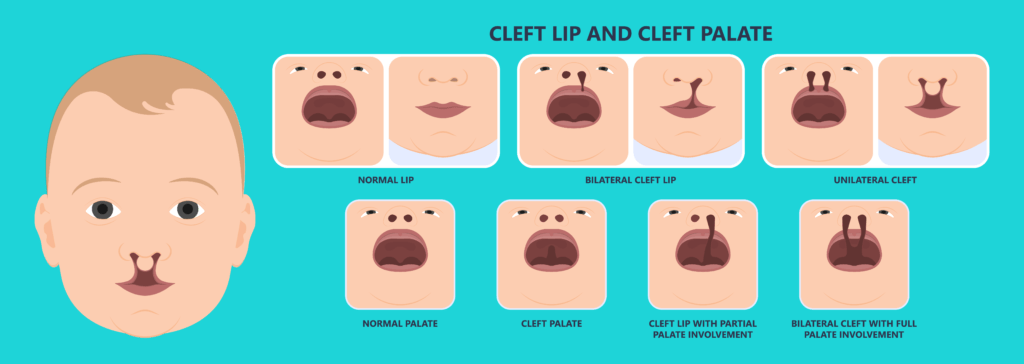
A cleft lip or a cleft palate is the most common birth defect in children. A baby may be born with only a cleft lip or a cleft palate but some children are born with both. More than 6,000 babies born each year in the United States are affected. A cleft lip can have a small or large split that extends from the lip to the nose. It can be on one side or both sides of the lip and sometimes in the middle. The opening in a cleft palate may affect either side or both sides of the palate.
Without correction, children with a cleft lip or cleft palate, also known as orofacial cleft, have a higher risk of ear infections, hearing loss, and dental problems. They may also have problems with eating and breathing. As they grow, they may also have delays in speech and language development.
Causes of Cleft Lip or Cleft Palate
Not all causes of cleft lip or cleft palate are known. It is known that during the early stages of a child’s development in the womb, there is a normal split between the left and right side of the lip and the roof of the mouth. During the second and third months of pregnancy, the split will fuse to form the lips and mouth. When they don’t close, it can result in a cleft lip or cleft palate.
Doctors believe that some of the causes of a cleft lip or cleft palate may be genetic. Other causes may be the result of the following during pregnancy:
- Use of certain medications
- Malnutrition or vitamin deficiencies
- Exposure to chemicals
- Smoking
- Alcohol use
- Diabetes
- Obesity during pregnancy
Surgical Repair of Cleft Lip or Cleft Palate
Reconstructive surgery is most often used to close the cleft lip or cleft palate. Cleft lip surgery is usually performed before the baby’s first birthday, between 3 months and 6 months old. For a cleft palate, surgery is usually performed when the baby is between 9 months and 14 months of age. With treatment, children do lead relatively normal lives. For children with residual muscle issues, from a cleft palate, speech therapy may be necessary.